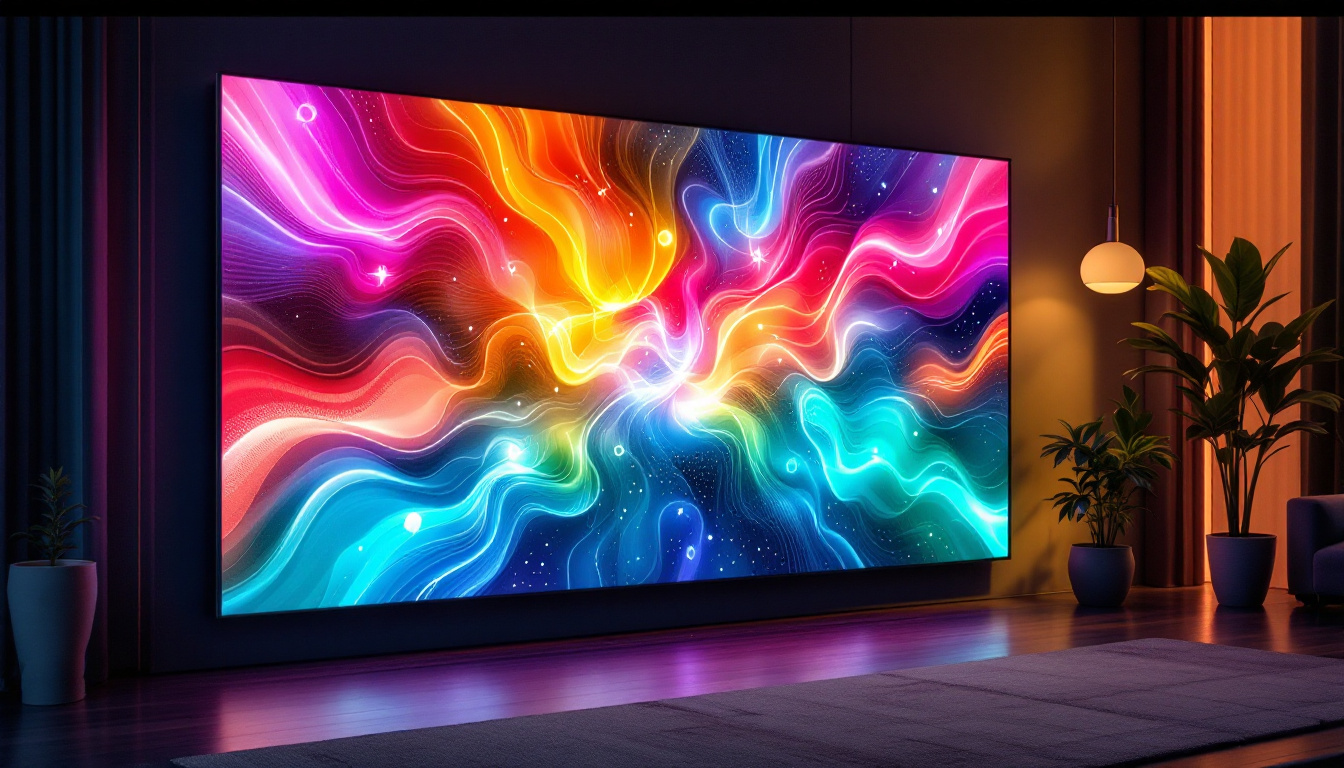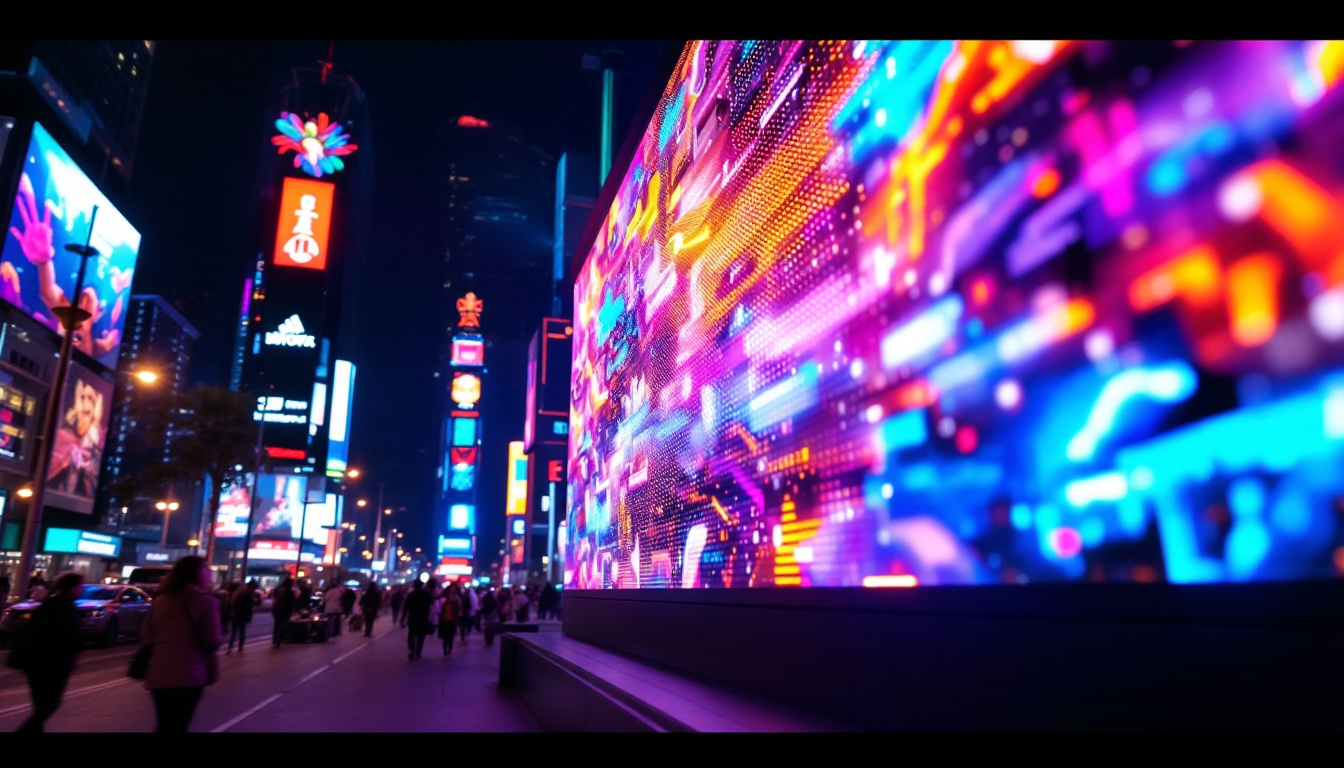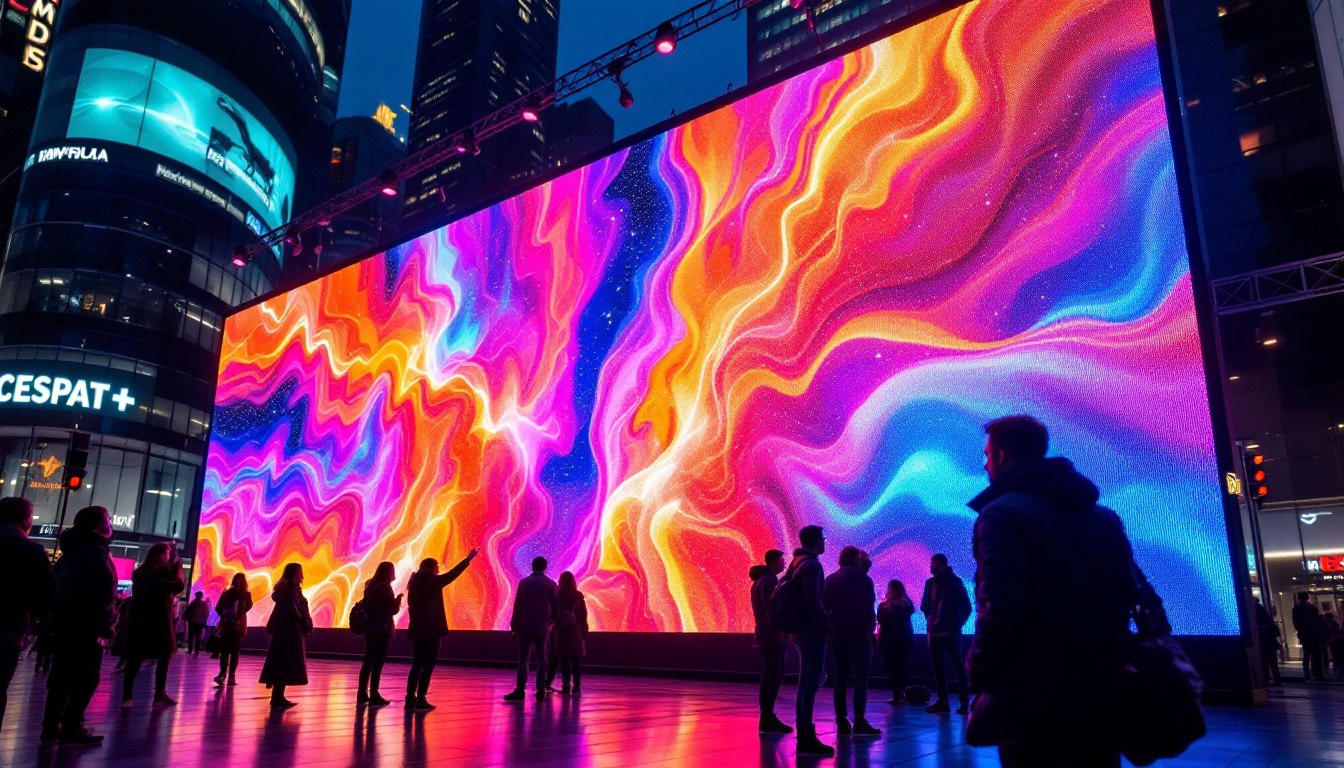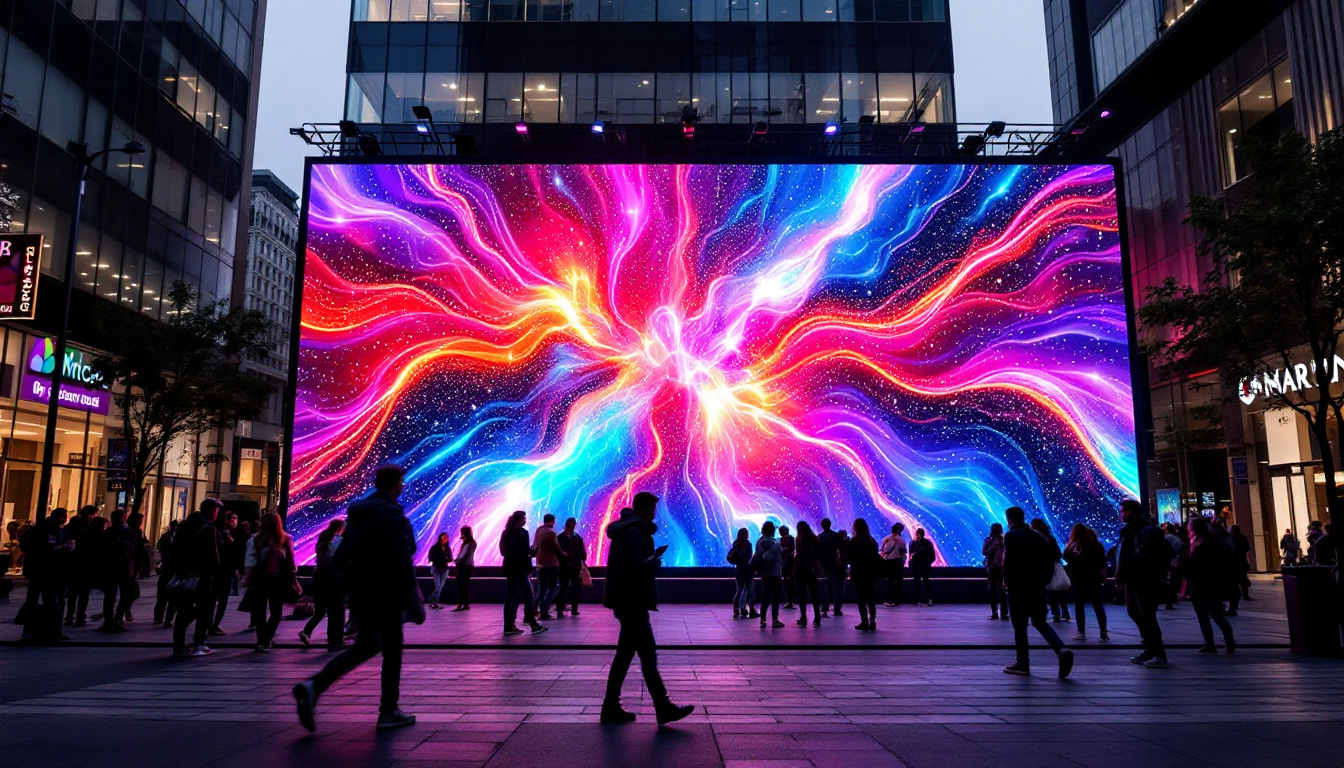Transparent LCD Display: LED Display Explained
In recent years, technology has made significant strides, particularly in display technology. Among the most innovative advancements is the transparent LCD display. This fascinating technology not only serves as a visual medium but also transforms how we interact with digital content. In this article, we will explore the intricacies of transparent LCD displays, their functionality, applications, and the future they hold.
Understanding Transparent LCD Displays
Transparent LCD displays are a unique blend of traditional liquid crystal display (LCD) technology and innovative design principles that allow for transparency. This means that while the display can show images and videos, it can also allow light to pass through, making it possible to see what is behind the screen. The technology operates on the fundamental principles of light modulation, where liquid crystals manipulate light to create images.
How Transparent LCD Displays Work
The core of a transparent LCD display consists of liquid crystals sandwiched between two layers of glass or plastic. When an electric current is applied, the liquid crystals align in a way that either blocks or allows light to pass through. In a transparent mode, the display can show images while still allowing viewers to see through it, creating a striking visual effect.
This technology is often paired with LED backlighting, which enhances the brightness and color vibrancy of the images displayed. The combination of transparency and vivid colors makes transparent LCDs particularly appealing for various applications, from advertising to interactive displays.
Key Features of Transparent LCD Displays
Transparent LCD displays come with several notable features that set them apart from traditional displays. One of the most significant advantages is their ability to blend seamlessly into environments. This feature is especially beneficial in retail settings, where businesses can showcase products while still allowing customers to see through the display.
Another key feature is their versatility. Transparent LCDs can be used in various formats, including standalone units, embedded in furniture, or integrated into architectural designs. This adaptability makes them suitable for a wide range of applications, from museums to corporate offices.
Applications of Transparent LCD Displays
Transparent LCD technology has found its way into numerous industries, revolutionizing how information is presented and consumed. Here are some of the most prominent applications:
Retail and Advertising
One of the most popular uses of transparent LCD displays is in retail environments. These displays can be placed in storefronts, allowing customers to view products while simultaneously engaging with digital content. For instance, a transparent display can showcase a promotional video while displaying the merchandise behind it, creating an immersive shopping experience.
Moreover, retailers can utilize transparent LCDs for in-store advertising, providing customers with information about sales, new arrivals, or promotions without obstructing their view of the products. This innovative approach not only enhances customer engagement but also increases the likelihood of sales conversions.
Corporate and Business Environments
In corporate settings, transparent LCD displays are increasingly used for presentations and information sharing. They can serve as digital signage in lobbies, displaying company information, news updates, or even interactive directories. The transparency feature allows for a modern aesthetic while maintaining functionality.
Additionally, these displays can be integrated into conference rooms, providing a futuristic touch to meetings. Participants can view presentations while still being able to see their colleagues, fostering a more collaborative environment.
Art and Design Installations
Artists and designers have embraced transparent LCD technology to create captivating installations. By combining digital art with physical spaces, they can produce unique experiences that engage viewers on multiple levels. Transparent displays can be used to overlay digital images onto real-world objects, creating a dynamic interplay between the virtual and physical realms.
This application is not limited to galleries; it can also extend to public art installations, where transparent displays can convey messages or tell stories in innovative ways. The potential for creativity is vast, making transparent LCDs an exciting medium for artistic expression.
Advantages of Transparent LCD Displays
The adoption of transparent LCD displays comes with several advantages that make them appealing for various applications. Understanding these benefits can help businesses and individuals decide whether to invest in this technology.
Enhanced Aesthetics
One of the most immediate benefits of transparent LCD displays is their aesthetic appeal. The ability to see through the display while still showcasing vibrant images creates a visually striking effect. This feature can enhance the overall ambiance of a space, making it more inviting and engaging.
Whether in retail, corporate, or artistic settings, the sleek design of transparent LCDs can elevate the visual experience, drawing attention and sparking interest. This aesthetic advantage can be particularly beneficial in competitive markets where first impressions matter.
Interactive Experiences
Transparent LCD displays can also facilitate interactive experiences, allowing users to engage with content in new and exciting ways. Touch-sensitive versions of these displays enable users to interact directly with the content, making it possible to navigate through information, select products, or even play games.
This interactivity can enhance customer engagement in retail settings or create memorable experiences in exhibitions and installations. The ability to blend physical and digital interactions opens up new avenues for storytelling and information sharing.
Space Optimization
In environments where space is at a premium, transparent LCD displays offer a unique solution. Their ability to function as both a display and a window allows businesses to optimize their space effectively. This dual functionality means that organizations can provide valuable information without sacrificing physical space.
For instance, a transparent display can be integrated into a partition or a piece of furniture, serving as a functional element while also showcasing digital content. This innovative approach can help businesses maximize their real estate while enhancing the overall design of their spaces.
Challenges and Limitations
While transparent LCD displays offer numerous advantages, they are not without challenges. Understanding these limitations is crucial for anyone considering their implementation.
Cost Considerations
One of the primary challenges associated with transparent LCD displays is their cost. Compared to traditional displays, transparent LCDs can be significantly more expensive due to the complexity of their technology and manufacturing processes. This higher price point can be a barrier for some businesses, particularly smaller enterprises with limited budgets.
However, as technology advances and production methods improve, the costs associated with transparent LCD displays are expected to decrease, making them more accessible to a broader range of users.
Brightness and Visibility
Another limitation of transparent LCD displays is their brightness and visibility in certain lighting conditions. While these displays can produce vibrant images, their transparency can sometimes result in reduced visibility, particularly in brightly lit environments. This issue can be mitigated by using high-quality LED backlighting, but it remains a consideration for potential users.
For optimal performance, transparent LCDs are best used in settings where lighting can be controlled or adjusted to enhance visibility.
Technical Challenges
Implementing transparent LCD technology can also pose technical challenges. Integrating these displays into existing systems or environments may require specialized knowledge and expertise. Additionally, the technology is still evolving, which means that ongoing maintenance and updates may be necessary to ensure optimal performance.
Organizations considering the adoption of transparent LCD displays should be prepared to invest in training and support to address these technical challenges effectively.
The Future of Transparent LCD Displays
The future of transparent LCD displays looks promising, with ongoing advancements in technology and increasing interest from various industries. As the demand for innovative display solutions continues to grow, transparent LCDs are likely to become more prevalent in everyday applications.
Technological Advancements
As research and development in display technology progress, we can expect to see improvements in the performance and affordability of transparent LCD displays. Innovations such as enhanced backlighting, improved resolution, and better energy efficiency will likely make these displays more appealing to a wider audience.
Additionally, the integration of artificial intelligence and augmented reality features could further enhance the capabilities of transparent LCDs, allowing for even more interactive and engaging experiences.
Broader Adoption Across Industries
As more businesses recognize the potential of transparent LCD displays, their adoption across various industries is expected to increase. Retailers, corporate offices, museums, and public spaces are likely to embrace this technology to enhance customer engagement and improve information dissemination.
Furthermore, as the technology becomes more accessible, smaller businesses and startups may also begin to explore the possibilities offered by transparent LCD displays, leading to a broader range of applications and creative uses.
Environmental Considerations
With growing awareness of environmental issues, the future of transparent LCD displays may also involve a focus on sustainability. Manufacturers may prioritize eco-friendly materials and energy-efficient technologies in their production processes, aligning with the global push for greener solutions.
This shift towards sustainability could not only benefit the environment but also appeal to consumers who are increasingly conscious of the impact of their purchasing decisions.
Conclusion
Transparent LCD displays represent a remarkable fusion of technology and design, offering unique opportunities for engagement and interaction. Their ability to blend digital content with the physical world opens up new possibilities across various industries, from retail to art installations.
While challenges such as cost and visibility remain, the future of transparent LCD displays is bright, with ongoing advancements poised to make this technology more accessible and versatile. As businesses and individuals continue to explore the potential of transparent displays, it is clear that they will play a significant role in shaping the future of visual communication.
In a world where technology is constantly evolving, transparent LCD displays stand out as a testament to innovation, creativity, and the endless possibilities that lie ahead.
Discover the Future of Visual Engagement with LumenMatrix
Ready to elevate your visual communication and create unforgettable experiences? LumenMatrix is at the forefront of transforming environments with our comprehensive range of LED display solutions. From vibrant Indoor and Outdoor LED Wall Displays to innovative LED Transparent Displays, we have the technology to bring your vision to life. Embrace the future of display technology and check out LumenMatrix LED Display Solutions today to see how we can help your business stand out and captivate your audience.































